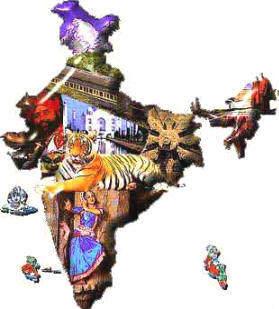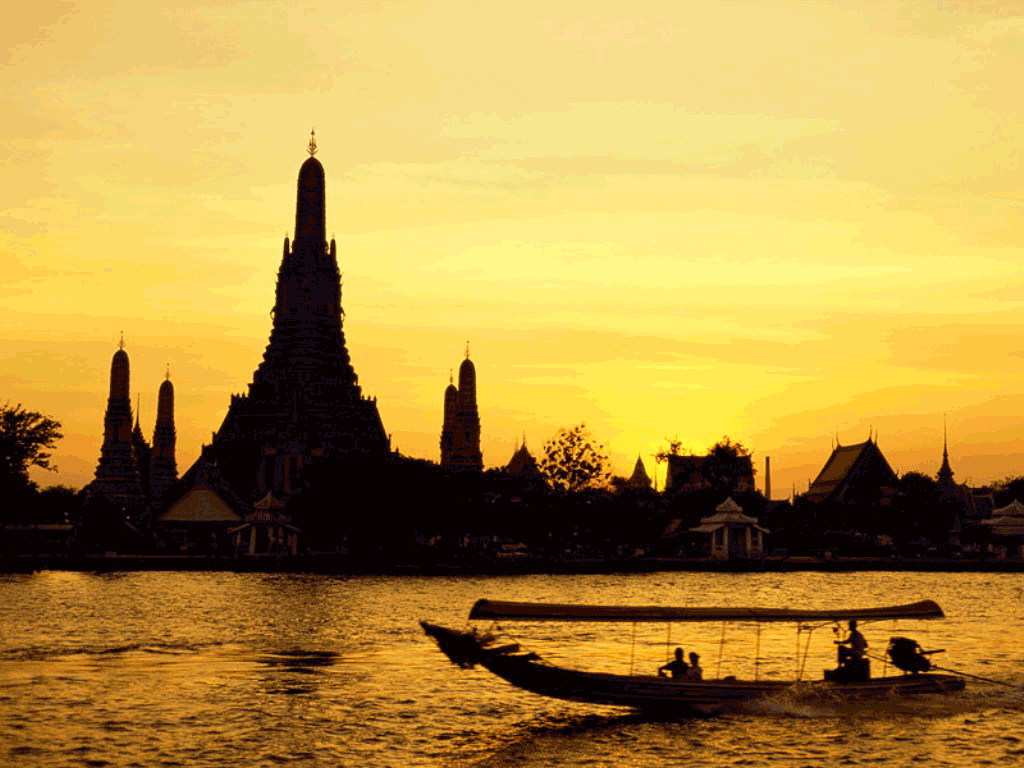|

Diwali:
(also spelled Devali in certain regions) or Deepavali,popularly known as the "festival of
lights", is an important five-day festival in Hinduism, Jainism, and Sikhism, celebrated
for different reasons, occurring between mid-October and mid-November. For Hindus, Diwali
is one of the most important festivals of the year and is celebrated in families by
performing traditional activities together in their homes. For Jains, Diwali marks the
attainment of moksha or nirvana by Mahavira in 527 BC. For Sikhs, Diwali is important
because it celebrates the release from prison of the sixth guru, Guru Hargobind, who also
rescued 52 Hindu kings held captive by Mughal Emperor with him in the Gwalior Fort in
1619.
Deepavali is an official holiday in India, Nepal, Sri Lanka, Myanmar, Mauritius,
Guyana, Trinidad & Tobago, Suriname, Malaysia, Singapore and Fiji.
The name "Diwali" is a contraction of "Deepavali" (Sanskrit: Dīpāvalī), which translates
into "row of lamps". Diwali involves the lighting of small clay lamps (diyas or dīpas) in Sanskrit)
filled with oil to signify the triumph of good over evil. During Diwali, all the celebrants wear new
clothes and share sweets and snacks with family members and friends. Most Indian business communities
begin the financial year on the first day of Diwali.
Diwali commemorates the return of Lord Rama, along with Sita and Lakshmana, from his
fourteen-year-long exile and vanquishing the demon-king Ravana. In joyous celebration of the return
of their king, the people of Ayodhya, the Capital of Rama, illuminated the kingdom with earthen diyas
(oil lamps) and burst firecrackers.
The festival starts with Dhanteras on which most Indian business communities begin their financial
year. The second day of the festival, Naraka Chaturdasi, marks the vanquishing of the demon Naraka
by Lord Krishna and his wife Satyabhama. Amavasya, the third day of Deepawali, marks the worship
of Lakshmi, the goddess of wealth in her most benevolent mood, fulfilling the wishes of her devotees.
Amavasya also tells the story of Lord Vishnu, who in his dwarf incarnation vanquished the Bali,
and banished him to Patala. It is on the fourth day of Deepawali, Kartika Shudda Padyami, that Bali
went to patala and took the reins of his new kingdom in there. The fifth day is referred to as Yama
Dvitiya (also called Bhai Dooj), and on this day sisters invite their brothers to their homes.
Ganesh Chaturthi:
is the blessed day when Lord Ganesha appears to confer happiness to the people on earth.
Also called Vinayaka Chaturthi, Ganesha Festival is celebrates the birthday of the Lord.
It is observed for 10 days, starting from Shukla Chaturthi till Ananta Chaturdashi (Hindu
dates fall between month of August or September) throughout the country. States like
Maharashtra, Gujarat, Karnataka and Andhra Pradesh celebrate this festival in the most
grandiose manner.
Bombay, the Financial Hub of India, commemorates this event in really extravagant style, with utmost
devotion. It's the time when streets bustle with devotees and huge 'pandals' (canopies) are set up,
housing the idols of Lord Ganesha - the Lord of Beginnings, Wisdom, Prosperity and Good Fortune.
Every nook and corner of the city appears drenched in the celebrations, excitement and enthusiasm.
However, the preparations for this festival start 2-3 months before the event, with the making of clay
models of the Lord.
On the festive day, the idol is placed on elevated platforms in homes or outdoor canopies, where people
come to pray. A red silk dhoti is worn by the priest, who invokes life in the idol by chanting mantras (ritual
known as Pranapratishtha). Followed by this, Shhodashopachara (16 ways of paying tribute) is done. Later the
idol is smeared with red unguent (rakta chandan). While doing all the rituals, hymns from the scriptures like
Rig Veda, Ganapati Atharva Shirsha Upanishad, and Ganesh Stotra are chanted.
For complete ten days, Lord Ganesh is worshipped with whole-hearted devotion. The image is taken into a procession,
where devotees dance and sing to their heart's content on the 11th day. Eventually, the idol is immersed in the sea with
reverence. Throughout the procession, people yell 'Ganapathi Bappa Morya, Purchya Varshi Laukariya' which means 'O
Father Ganesh! Come again early next year'. Ganesh Chaturthi is a great festival of religious and social fervor,
which presents a valuable insight, especially in Mumbai.
Holi:
is a religious spring festival celebrated by Hindus. It is primarily observed in India,
Nepal, Sri Lanka, and countries with large Indic diaspora populations following Hinduism, such
as Suriname, Malaysia, Guyana, South Africa, Trinidad, United Kingdom, United States, Mauritius,
and Fiji. In West Bengal and Orissa of India it is known as Dolyatra (Doul Jatra)
Bengali :Basanta-Utsav ("spring festival") . The most celebrated Holi is that of the Braj
region, in locations connected to the Lord Krishna: Mathura, Vrindavan, Nandagaon, and Barsana.
These places have become tourist destinations during the festive season of Holi, which lasts
here up to sixteen days.
The main day, Holi, also known as Dhuli Vandana in Sanskrit, also Dhulheti, Dhulandi or Dhulendi,
is celebrated by people throwing coloured powder and coloured water at each other. Bonfires are lit on
the eve of the festival, also known as Holika Dahan (burning of Holika) or Chhoti Holi (little Holi).
The bonfires are lit in memory of the miraculous escape that young Prahlad accomplished when Demoness
Holika, sister of Hiranyakashipu, carried him into the fire. Holika was burnt but Prahlad, a staunch
devotee of god Vishnu, escaped without any injuries due to his unshakable devotion. Holika Dahan is
referred to as Kama Dahanam in South India.
Holi is celebrated at the end of the winter season on the last full moon day of the lunar
month Phalguna (February/March), (Phalgun Purnima), which usually falls in the late february.
Rangapanchami:
occurs a few days later on a Panchami (fifth day of the full moon), marking the end of festivities involving colours.
Mahashivratri:
Maha Shivratri or Maha Sivaratri or Shivaratri or Sivarathri (Great Night of Shiva or
Night of Shiva) is a Hindu festival celebrated every year on the 13th night/14th day in the Krishna Paksha
(waning moon) of the month of Maagha (as per Shalivahana or Gujarati Vikrama) or Phalguna (as per Vikrama)
in the Hindu Calendar (that is, the night before and day of the new moon). The festival is principally
celebrated by offerings of Bael (Bilva) leaves to the Lord Shiva, all day fasting and an all night long
vigil. Per scriptural and discipleship traditions, the penances are performed in order to gain boons in
the practice of Yoga and meditation, in order to reach life's summum bonum steadily and swiftly.
Dussera:
Dussera or Vijayadashami, the tenth day of the bright half of Aswin is celebrated
as the day of victory to rejoice about Durga's triumph over the demon Mahishasura.
In Mysore in the hilltop Chamundi temple, Dussera is a picturesque festival. The godess is the
Maharaja's family deity and a procession of elephants, courtiers and court symbols attracts tourists
by the thousands as it wends its circuituous way to the temple, decorated splendidly for the festival.
With the decline of the royal family of Mysore however the festival has lost some its traditional lustre.
In Tamil Nadu, Andhra Pradesh and Karnataka, families arrange dolls(Bommai Kolu) and artefacts with decorative
displays of lamps and flower. Women traditionally exchange gifts of coconuts, clothes and sweets.
In the northern states Dussera also celebrates the homecoming of Rama the hero of the epic
Ramayana, after his victory over Ravana, the king of Lanka. In vast open spaces, Ramleela,
the folk play with music and spontaneous dialogues, retelling the story of the life of
Rama, are enacted till the wee hours. Songs are sung in praise of Rama and people in thousands witness
this traditional theatre with its exaggerated costumes, jewellery, makeup and drama. Larger than life figures
of Ravana and other demons are burnt on cold dark nights with fireworks lighting up the sky.
Dussera is also reminiscent of the end of the exile and banishment of the Pandava princes in the
Mahabharata and their return with their weapons to reclaim their kingdom. In memory of this epic
story, people in Maharashtra worship the implements of their professions and distribute the leaves
of the Shami tree as gold and express their goodwill.
Vijayadashami is the day of the Saraswati or the deity of knowledge and learning. Children begin
their school education, their art lessons or their career planning on this day and seek their elders
blessings. For Hindus Dussera is one of the four most auspicious days of the year.
Navratri:
Navratri, the festival of nine nights is dedicated to Goddess Durga and her nine forms.
According to the Hindu calendar, Navratri begins from the first day of the bright fortnight of Ashwin
which usually coincides with the end of the rainy season.
The nine days have great religious significance as Goddess
Durga, the divine mother, had destroyed the evil force (in the form of the demon Mahisashura) during this period.
The festival is celebrated with true devotion and purity all over the country. People from various sections of the
society irrespective of caste and creed celebrate this festival by visiting temples and offering pujas at the Mother�s
feet.
In some places special puja samarohas are also held by setting the images of Mother Durga on beautifully decorated pandals.
Temples dedicated to Shakti also make arrangement for pujas and bratas to mark these nine days as true symbols of
devotion and adoration towards the divine mother.
|

